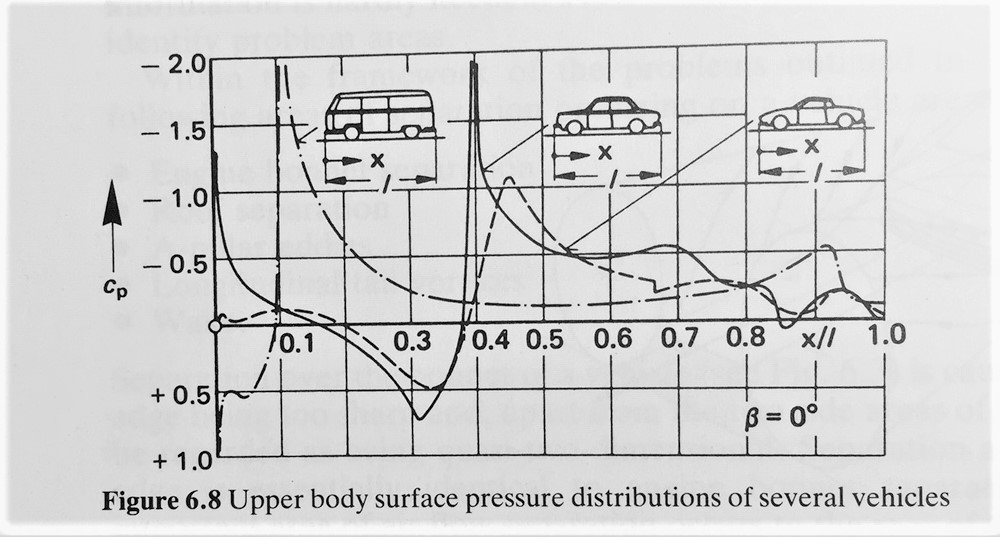Honestly, the one really good thing that Aerohead's posts do is
make me check my facts. That is, why, I think to myself, am I so confident Aerohead is quite wrong, especially when he has good citations to (purportedly) back it up?
That's why, where I can, I go look at his citations.
So this was a good example.
Aerohead writes:
Quote:
Originally Posted by aerohead

5) all the low pressure of the suction peak can be overwhelmed by the high local static pressure acting at the nose and tail.
|
...and I think, nah, I've
never measured high downwards pressures on the nose of any normal car. And in published (and my measured stuff), downwards pressures on the rear of a car come only with a rear spoiler (or, in very unusual vehicles - like solar race cars - by fully attached flow).
So then Aerohead nominates Fig 6.8 in Hucho (second edition) as his evidence.
So maybe I am wrong? Better go take a look.

No, there it is.
The only downwards pressure occurs ahead of the windscreen of the Transporter - the peak (Cp of 1) - is in a very clear stagnation zone... so acting
backwards, not up or down!
You need to look not only at the pressure,
but also the direction in which it is acting. A big, flat, vertical surface on the front of a vehicle is going to develop high pressures, but that's all drag, not downforce!
Furthermore, the idea that "all the low pressure of the suction peak can be overwhelmed by the high local static pressure acting at the nose and tail" is obviously wrong when the area of the graph is far greater in the negative pressure zone (let alone that acting vertically) than the positive!
So, either Aerohead cannot read and understand the diagram, or he is confused, or his theory is wrong, or he is deliberately prosecuting an argument by being deceptive - you choose.